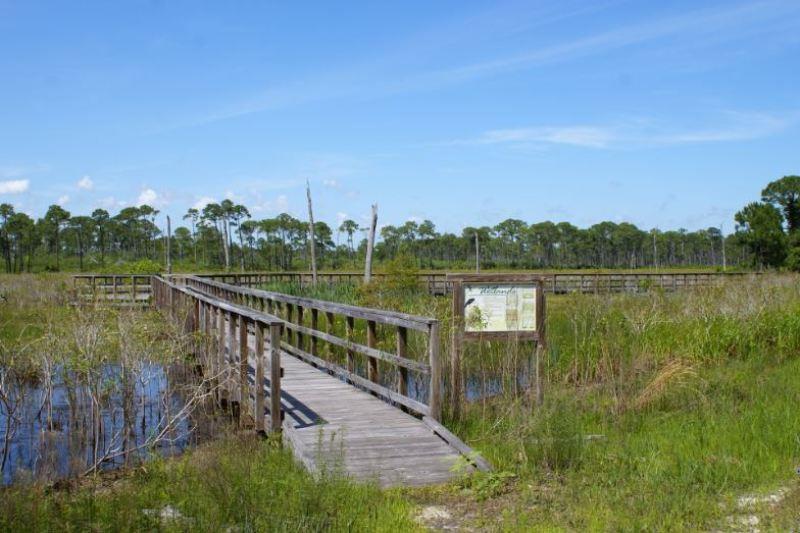
Alabama releases second restoration plan
by gulfspill-staging.woc.noaa.gov 20 Sep 2018 13:26 UTC

A boardwalk meandering through Alabama wetlands © gulfspillrestoration.noaa.gov
The Alabama Trustee Implementation Group has approved its second Restoration Plan and Environmental Assessment (PDF, 1,218 pg) to address natural resource injuries from the Deepwater Horizon oil spill.
The plan and appendices are listed below. This restoration plan focuses on restoration alternatives that will:
- Restore and benefit wetlands, coastal, and nearshore habitats, including some on federally managed lands.
- Improve water quality by reducing non-point source pollution to increase the overall health and productivity of these ecosystems.
- Restore sea turtles, marine mammals, birds, and oysters.
- Play a significant role in the collection and/or analysis of data that would improve our ability to conduct future restoration.
The plan aims to partially compensate the public for injuries to natural resources and resource services in the Alabama Restoration Area and is consistent with the
Trustees' Programmatic Restoration Plan. The total estimated cost for the 22 selected restoration alternatives is approximately $35 million. This includes funds from our monitoring and adaptive management allocation to address uncertainties with existing data in order to inform and enhance future restoration.
We began this restoration planning effort in December 2016 by requesting project ideas from the public. We considered these ideas when identifying and screening project proposals to include in the draft restoration plan and environmental assessment.
The draft plan and environmental assessment was released for public review and comment and we held a public meeting in Spanish Fort in April 2018. The comment period closed on May 7. The final Restoration Plan and Environmental Assessment reflects revisions to the draft plan resulting from public comments and continuing Trustee project development.